A Problem Solving Guide to Leather Repair Issues
On this web page, we help you to solve any problems in fixing your leather sofas, leather car seats, leather handbags and more. All our products have been developed for professional use but can be used by anyone provided you follow all the instructions and videos on our website.
Check the list of common leather problems below, identify your repair issue, and then click on the link to find out what products you need to make your leather look as good as new once again.
Step 1 is to determine which type of repair problem you have and then which products you need to use, using the options listed above.
Step 2 for many leather repairs is to determine if your leather is absorbent or non-absorbent. You can do this by dropping a small amount of water on to an undamaged area and leave it for around 8-10 seconds. If the water soaks in to the leather it is classed as absorbent, if much of it remains on the surface, you have non-absorbent leather.
Step 3 is to regularly maintain and protect your leather after repairing any damage, using our Leather Care Kit. Regular cleaning with Leather Ultra Clean and application of Leather Protection Cream every three months will extend the functional life of the leather item and keep it looking fresh and new.
Deeply Ingrained Dirt
With continued use, leather will get dirty over time and sometimes this dirt can become deeply ingrained into the surface.
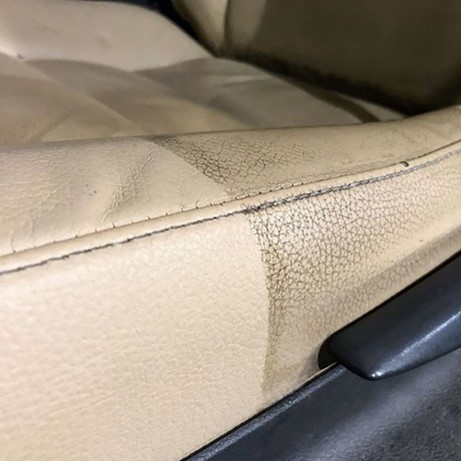
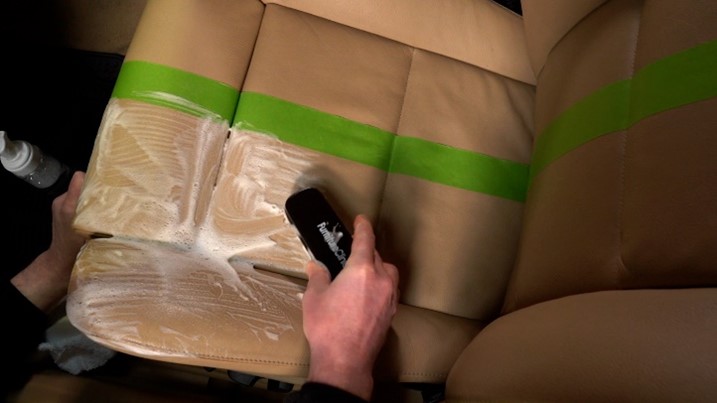
For removal of deeply ingrained dirt in leather without causing any damage, use our Leather Care Kit.
For best results, pour the Leather Ultra Clean into a Foaming Bottle first to create a foam. Apply the foam to the Cleaning Brush directly from the bottle and rub into the leather in a circular motion to lift the dirt and grime.
After cleaning the leather, wipe it down with a terry towel or soft, clean cloth to remove any cleaning residue. After cleaning, apply the Leather Protection Cream.
We have a several different blogs which will help you to clean and protect your leather:
Cuts, Holes, or Rips in the Leather
Cuts, holes, rips and even burns in your leather items are concerning, but they can be fixed very easily.
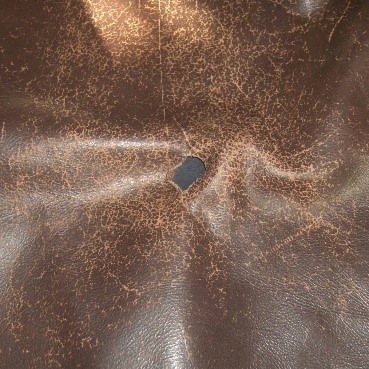
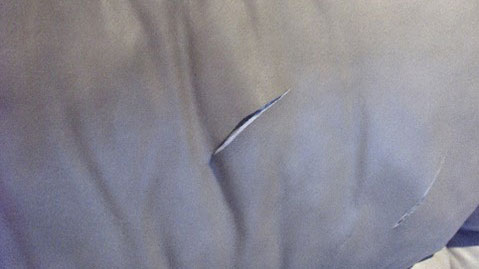
The product you need to clean, protect and repair small cuts, holes, rips and scratches in leather is our Leather Repair Kit. And to find out more about what you can do with this kit, check out this How to Guide.
For a burn in the leather, you may need to cut a hole in order to fix it. This How to Guide will show you how.
For guidance on fixing cuts in leather sofas etc, check out this How to Guide.
And for fixing a tear in a leather sofa, check out this How to Guide.
Grease or Oil Stains
Headrests and armrests are common areas on leather to develop grease stains from the natural oils in our hair and skin. Oil stains will leave prominent marks on the leather, but it is possible to remove them.
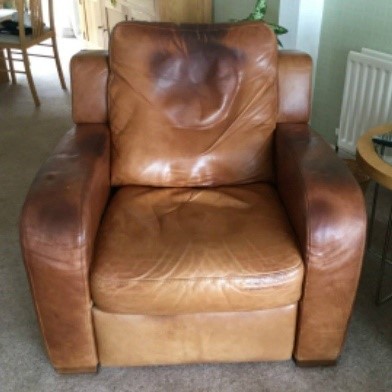
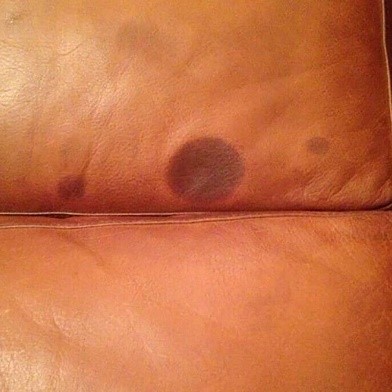
The product that you need to clean, protect and remove grease, oil and fat stains from leather – including head grease stains – is our Leather Degreaser. If there is any colour loss after extracting the grease, you will then need to restore the colour using either the Leather Recolouring Balm (if your leather is absorbent) or the Leather Colourant Kit (for non-absorbent leather).
To find out more about our degreasers, check out this blog post.
Leather is Discoloured or Faded
With continued use or if exposed to the sunlight, your leather can wear off quicker on specific areas of your furniture or car seats.
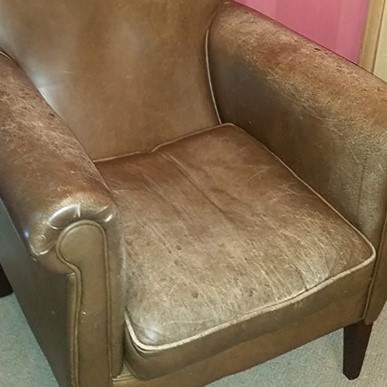
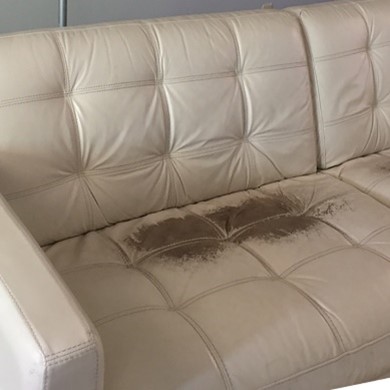
To restore the colour, you can use our Leather Recolouring Balm for absorbent leather and our Leather Repair Kit (for small areas) or Leather Colourant Kit (for larger areas) for non-absorbent leather.
The following links will assist you in restoring the colour to your leather:
Scuffs or Scratches on Leather
Scuffs and scratches on leather can often be due to general wear and tear making the leather look discoloured and worn, or they can be the result of pet scratches.
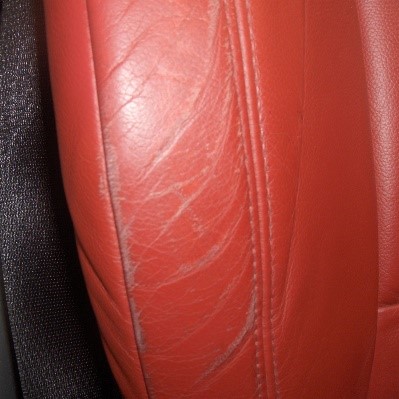
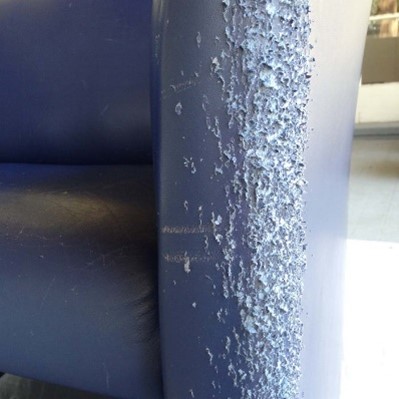
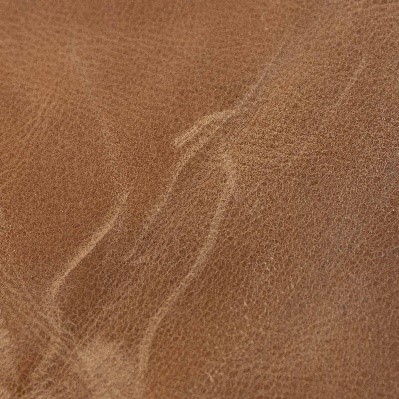
If you have absorbent leather with light scuffs or scratches, we recommend our Complete Leather Restoration Kit to clean, protect and restore the colour.
For small areas of damage and colour loss on non-absorbent leather, the products that you will need to is the Leather Repair Kit.
Where the area of damage on absorbent or non-absorbent leather is larger than a tennis ball, you will need a more comprehensive repair package and we would recommend a Leather Colourant Kit and Repair Add-on.
As you are not restoring the entire item, you should always clean the whole surface of the leather and protect it with the Leather Ultra Clean and Leather Protection Cream. This will ensure that any dirt or grime on the surface of the leather, that may make the colour deviate in appearance from the original, is removed. Doing this will produce a much better result from your repair, allowing it to blend with the surrounding leather seamlessly.
For more information on how to repair scuffs and scratches using our Leather Repair Kit, check out this blog.
And this guide for more information on how to avoid and repair cat scratches on a leather sofa or chair.
Dye Transfer and Ink Stains
Accidental ink marks on white or cream leather do happen, and sometimes denim or dark clothing can transfer dye onto the leather.
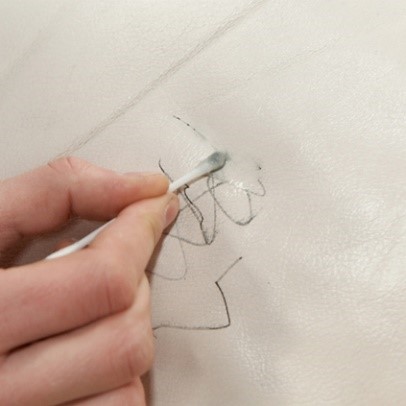
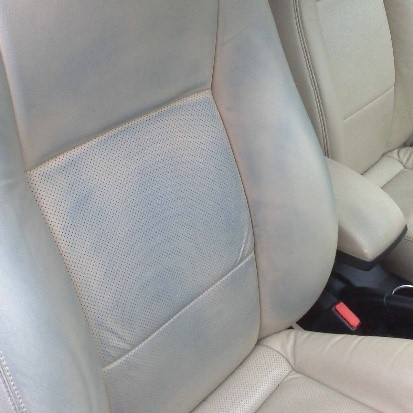
The product needed remove dye/ink transfer stains from non-absorbent leather – including from denim and newspapers – is the Leather Stain Remover. If at any point when removing the stain you begin to see the colour of the leather being transferred onto the cloth, stop immediately and allow the area to dry. Once dry, you can continue to remove the stain.
For biro and felt tip pen stains, use our Leather Ink Remover Kit. More stubborn stains may require rubbing or more pressure to be applied, but always start off gently and then get more aggressive.
Leather is Cracking
Cracks will occur in leather over time, and especially if it dries out or is exposed to sunlight. Using the correct products and processes, you can easily repair the cracking so that the repair is strong and long lasting.
To clean, protect and repair heavily cracked leather, we would recommend you use our Leather Colourant Kit.
For any absorbent leather that is just lightly cracked we would recommend you use our Complete Leather Restoration Kit.
For more information on restoring a cracked leather sofa or car seat, check out our How to Guide.
Removing Food and Drink Stains
Tea, coffee, curry spills on your leather? Don’t worry – we have the products to help you remove food and drink stains.
The product needed to clean, protect and food and drink stains from leather is the Leather Stain Remover. If at any point when removing the stain you begin to see the colour of the leather being transferred onto the cloth, stop immediately and allow the area to dry. Once dry, you can continue to remove the stain.
For any nail varnish or paint stains, use these same products and procedures.
Finish (or Top Layer) is Peeling Off
When your leather starts to peel it can sometimes be because the top coat of finish is coming off. Using the wrong products on leather – which contain solvents and chemicals – can also cause the leather to peel.
The products you need to clean, protect and re-finish leather is our Leather Finish Kit. We recommend that you remove all of the peeling using Leather Ultra Clean before applying any new finish as this will allow the new finish to adhere properly to the leather.









